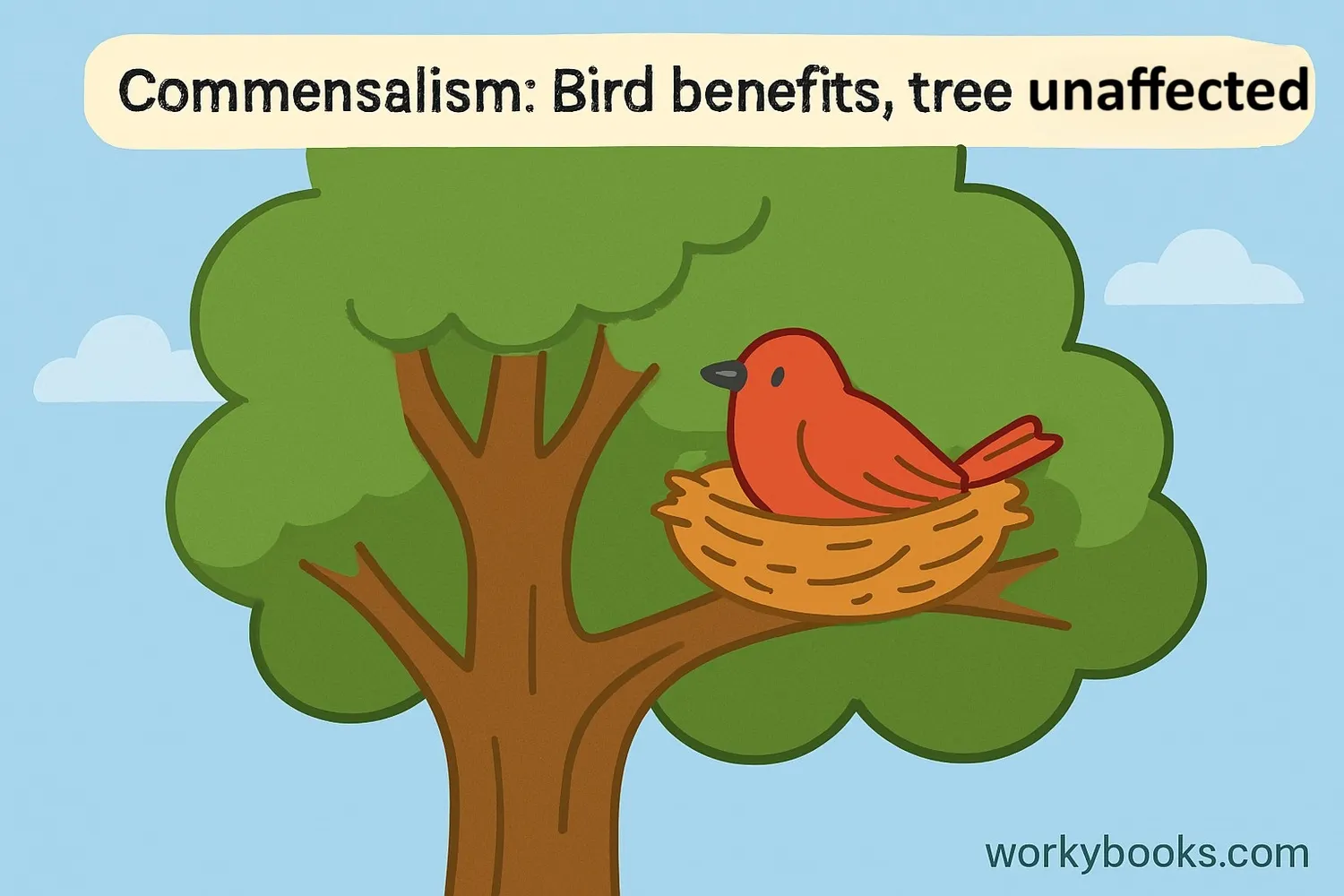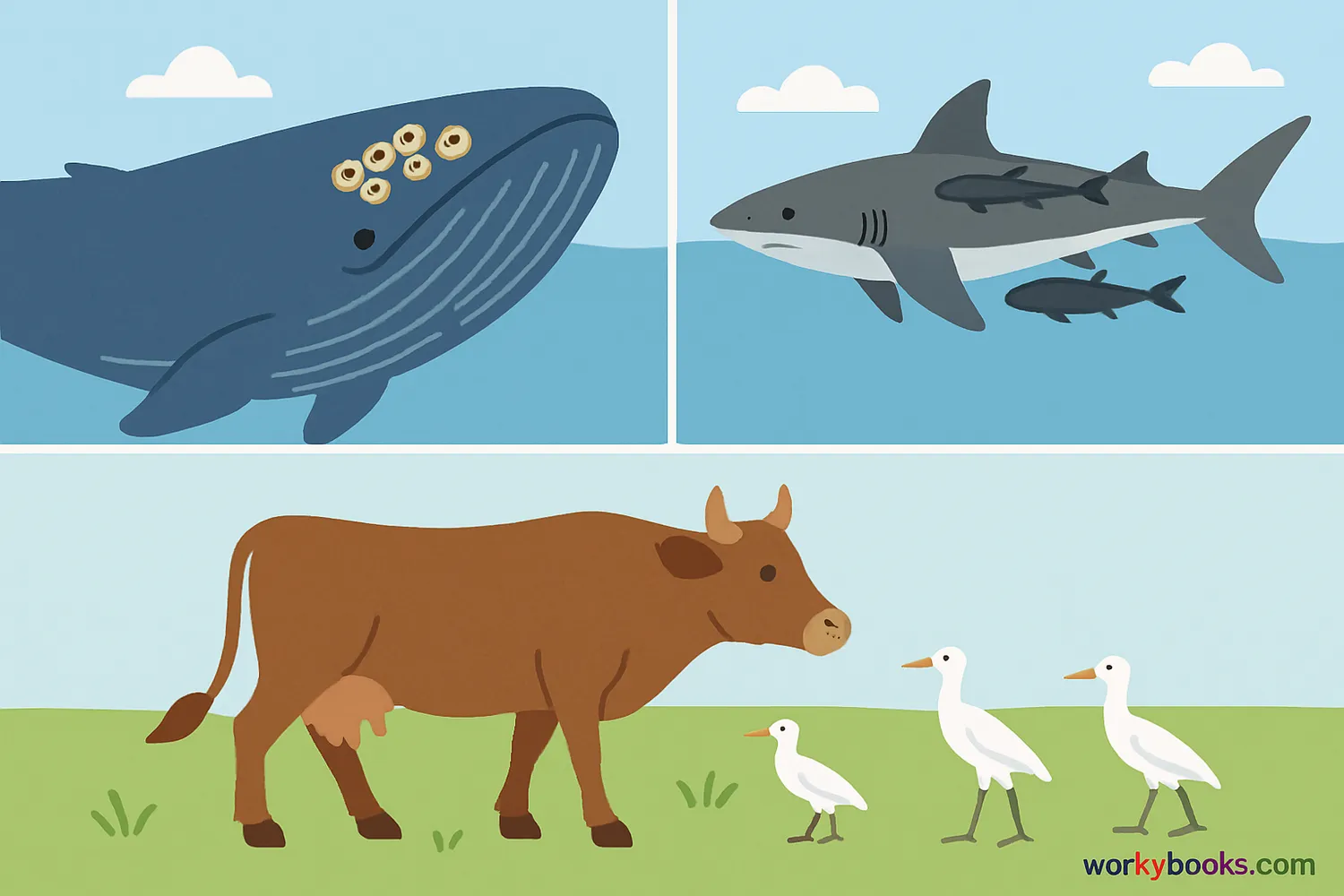Commensalism in Nature - Definition, Examples, Quiz, FAQ, Trivia
Discover how some living things benefit without harming others!
What is Commensalism?

Commensalism is a special relationship between two living things where one benefits while the other isn't helped or harmed. The word comes from Latin words meaning "eating at the same table".
In commensalism:
- One organism gets a benefit (like food, shelter, or transportation)
- The other organism is unaffected
- No harm comes to either organism
Science Fact!
Commensalism relationships are common in nature but sometimes hard to spot because one organism isn't affected at all!
Commensalism vs Mutualism
Commensalism is different from mutualism. While both are types of symbiosis (living together), they have important differences:
| Type | Organism A | Organism B | Example |
|---|---|---|---|
| Commensalism | Benefits | Unaffected | Barnacles on a whale |
| Mutualism | Benefits | Benefits | Bees and flowers |
| Parasitism | Benefits | Harmed | Ticks on a dog |
Remember: In commensalism, only one partner benefits while the other isn't affected. In mutualism, both partners benefit from the relationship.
Relationship Fact!
Sometimes commensalism relationships can become mutualism if scientists discover hidden benefits to the "unaffected" organism!
Examples of Commensalism

Commensalism happens in many different environments. Here are some fascinating examples:
Ocean Examples
Barnacles on whales: Barnacles attach to whales and get transportation to food-rich areas. The whale isn't harmed or helped.
Remoras and sharks: Remoras attach to sharks with a suction cup on their head. They eat scraps from the shark's meals without affecting the shark.
Animal Examples
Birds and cattle: Cattle egrets follow grazing cattle and eat insects stirred up by the cattle's movement. The cattle are unaffected.
Tree frogs and plants: Tree frogs live on plants to stay safe from ground predators. The plants aren't affected by the frogs.
Human Examples
Birds nesting on buildings: Birds like pigeons build nests on human structures without harming them.
Plants growing on fences: Vines may grow on fences for support without affecting the fence's function.
Ocean Commensalism
Many marine commensal relationships involve small organisms attaching to larger ones
Forest Commensalism
Plants like orchids grow on trees without taking nutrients from them
Desert Commensalism
Small animals use burrows made by larger animals for shelter
Commensalism Quiz
Test your knowledge about commensalism with this interactive quiz!
Frequently Asked Questions
Here are answers to common questions about commensalism:
Fun Commensalism Trivia
Discover amazing facts about commensalism relationships in nature:
Ocean Hitchhikers
Some remoras can attach to multiple hosts in their lifetime, traveling with turtles, sharks, and even boats! They've been known to travel thousands of miles this way.
Ancient Air Plants
Some epiphytic plants like Spanish moss can live for hundreds of years on host trees without ever touching the ground or harming their hosts.
Insect Commensalism
Some beetles live in ant colonies, eating waste and dead material without being noticed by the ants. This is called "inquilinism" - a special type of commensalism.
Hidden Relationships
Scientists discover new commensal relationships every year. Recently, they found tiny crabs living in the gills of sea cucumbers without causing any harm!


